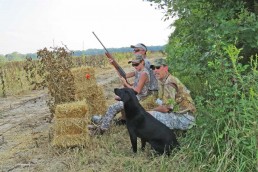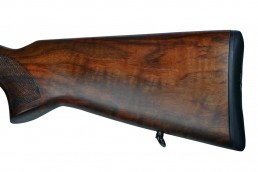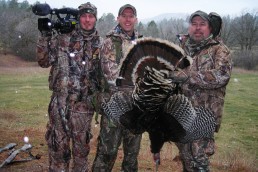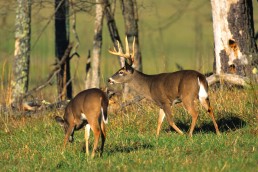Stock up on Ammo for Early Dove Action
SHARE THIS POST
Dove hunting is a humbling and expensive hunting experience. It is humbling because it tells you that you are not as good a shot as you think, and it can be expensive due to the high cost of ammunition that you waste on those missed shooting opportunities. Still, the opening of the season is a great warm-up for the other small game and bird hunting to come later.
Doves are widely distributed in Kentucky and Tennessee, and although they are a migratory bird, they overwinter in this area. Flocks of them migrate in response to the overall seasonal temperature changes. Generally, they’ll only move about 10 to 20 miles per day.
Decoys are vital for hunting doves, and remember to use them creatively. The most common placement is with a few on the ground and with others on fences or bare tree limbs above water holes. Also, bring an artificial tree with you. These can be bought or made at home. With your decoys already placed in a tree, you can then put it wherever the flight path of the birds are on that day.
Decoys are more lifelike if you modify them. Cut a small hole in the underside of a standard decoy. Insert some BB’s and seal the hole. On the upper side, attach some fishing line that still is connected to the rod and reel. You can cast the decoy over a bare branch and reel it into a point where the belly of the decoy looks like it is perched in the tree. The BB’s keep the decoy upright and looking like it is sitting comfortable on the branch. This allows you to place decoys higher than would normally be possible.
Doves are cautious birds. When they approach a water hole, it is common for them to land on nearby power lines or the bare branches of dead trees. From there, they can survey the area for danger before landing on the ground to feed or drink. The cunning hunter will conceal himself in full camo or hide in a blind within range of the area.
As birds fly down, they’ll present a slower target than when flying past. Wait until they are within 25 to 30 yards from your position. This saves on ammunition and also provides the opportunity for a second shot before a missed bird gets out of range. And if you do hit any and can’t find their location, a retriever dog can find the doves that are lost in the area but are on the ground. These dogs will follow wounded birds wherever they hide.
Are you enjoying this post?
You can be among the first to get the latest info on where to go, what to use and how to use it!
Instinctive shooting is better than trying to lead a bird. Doves dip and dive, seldom presenting a clear shot from your setup—this is point-and-shoot hunting. Early in the season, number 8 or 9 shot seems best. Later, when not hunting local birds but rather migratory birds, you can move to a number 7 shot, extending the distance that can result in a hit.
The less you move around, the less a chance there is of scaring birds away. Sometimes staying still is difficult with mosquitos around, so use bug repellent.
Finally, use the latter days of the season when hunting pressure can be lighter and go hunt alone with your dog. Early on, the pressure from big parties of hunters can cause doves and other birds to be flighty, making shooting difficult. Once the early pressure lessens, the experience becomes more enjoyable as doves tend to get careless and present better hunting action.
Don Gasaway is a veteran outdoor writer from Marion, Ill. He may be contacted at: dongasaway.wordpress.com or facebook.com/DonsJournal.
MWO
SHARE THIS POST
Did you enjoy this post?
You can be among the first to get the latest info on where to go, what to use and how to use it!
Don Gasaway
Don Gasaway is a veteran freelance outdoor writer from Marion, Ill. He may also be found at: https://www.facebook.com/DonGasawayWriter and facebook.com/Wandering Angler. Comments are welcome



